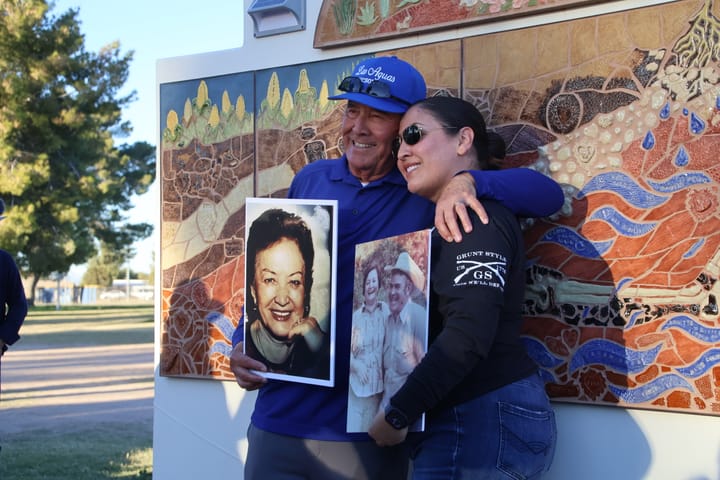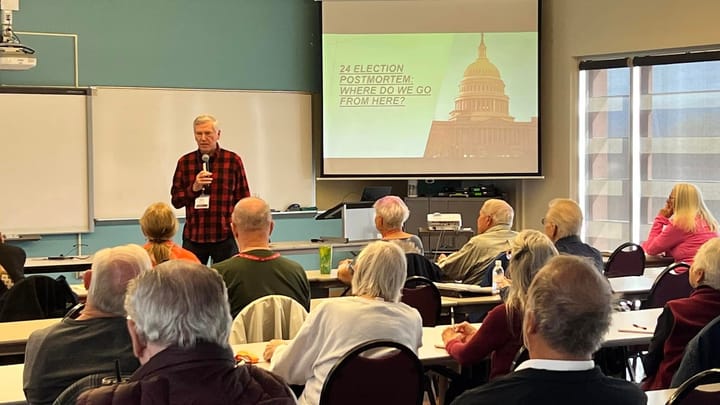Tucson artists unveil mural linking struggles for liberation across borders
Tucson artists unveiled a new mural, Let it Weave Us, highlighting the interconnected struggles for liberation in Palestine and the U.S.-Mexico borderlands through community-driven art and activism.
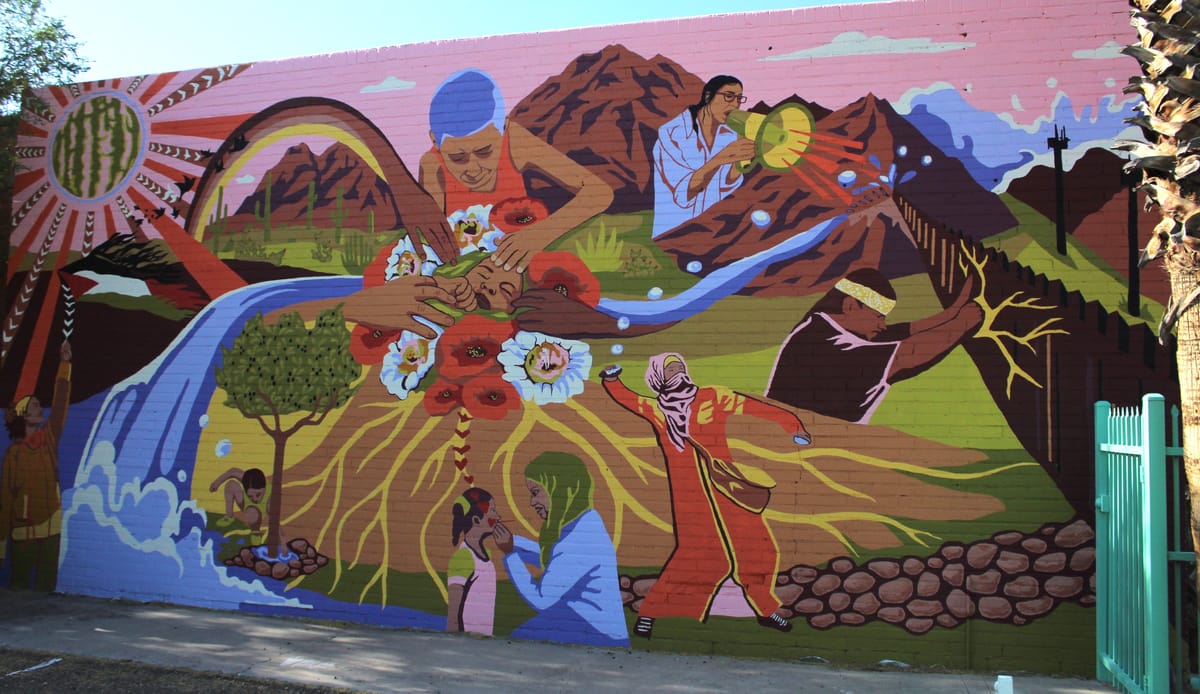
In a celebration of resistance, solidarity and survival, Tucson artists unveiled a vibrant new mural in Armory Park that ties together struggles for liberation across the U.S.-Mexico borderlands and Palestine.
The mural, "Let it Weave Us," is on the south wall of BorderLinks, a nonprofit that offers learning opportunities exploring the difficulties of migration and life along the border.
The mural was designed by a group of Tucson artists, including Maxie Adler, Dani Alvarez, Lisa Rooney, Serena Tang and Lindee Zimmer.
It was made possible by community donations and labor. BorderLinks hosted the unveiling event in its parking lot Saturday evening to raise funds and facilitate discussion about the militarization of borderlands.
The event kicked off with the group of artists taking turns reading a prepared statement about their work.
"’Let it Weave Us’ affirms the Tucson community’s commitment to a free Palestine, a world without walls, and the liberation of all peoples through resistance, care, and solidarity," the statement said.
The group first came together in fall 2023 to design and paint a mural at East Broadway and South Columbus boulevards reading "Free Palestine, End the Occupation."
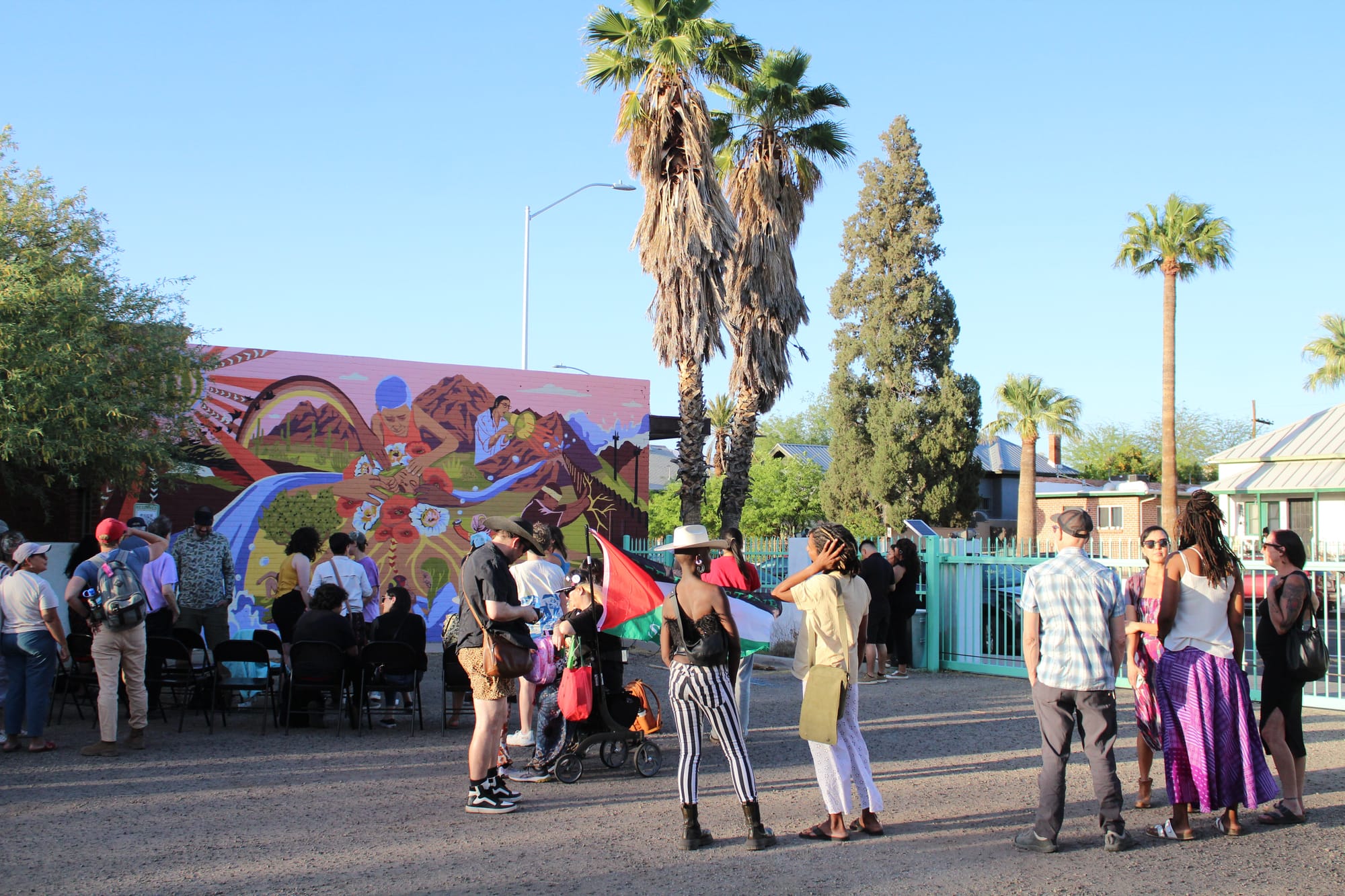
The BorderLinks mural is their second collective work.
"We titled the mural ‘Let it Weave Us’ to reflect the interconnected threads of corporate greed, state violence, militarization, resistance, and hope that stretch across movements and across land," the statement said. "We draw connections between the U.S.-Mexico borderlands and the borders imposed on Palestine, both shaped by occupation and militarization."
The mural includes images of integrated fixed towers, found both in Palestine and along the U.S.-Mexico border.
The mural highlights the Arizona-Mexico border with prickly pear cactus, saguaro blooms, mountains and the border wall. The Palestine-Israel border is represented by a watermelon sun, kites, waves, olive trees and more.
"We center Indigenous resilience in the face of colonial assault, both historical and ongoing, by drawing from photos of Indigenous resistance in the U.S.-Mexico borderlands and Israel-Palestine, voices of scholars and resistors, Palestinian poetry, symbols of solidarity, and our own experiences as artists," the statement said.
Each piece of the mural was planned with deep meaning and symbolism, and each individual depicted is a real person fighting and caring for their homeland, the group said.
For artist Adler, the most important part of the mural is that every person depicted in each scene is real.
"The inclusion of the land and the hope and the love that is still present within these amazing people who are fighting for their homelands is a part that is really important to me," she said.
One of these people is Nellie Jo David, the director of academic and community engagement with Earlham College’s Border Studies Program. She is pictured in the mural’s top right corner, shouting into a megaphone across the border wall.
David, an O’odham scholar and activist, spoke after the artists' statement about Indigenous resistance to border militarization. She recognized the anxiety people may be feeling with the uncertainty of our time, referencing climate change, for example.
"I really appreciate how this community, in particular, doesn’t give up," she said. "And we’re continuing to speak up and out even when it is hard."
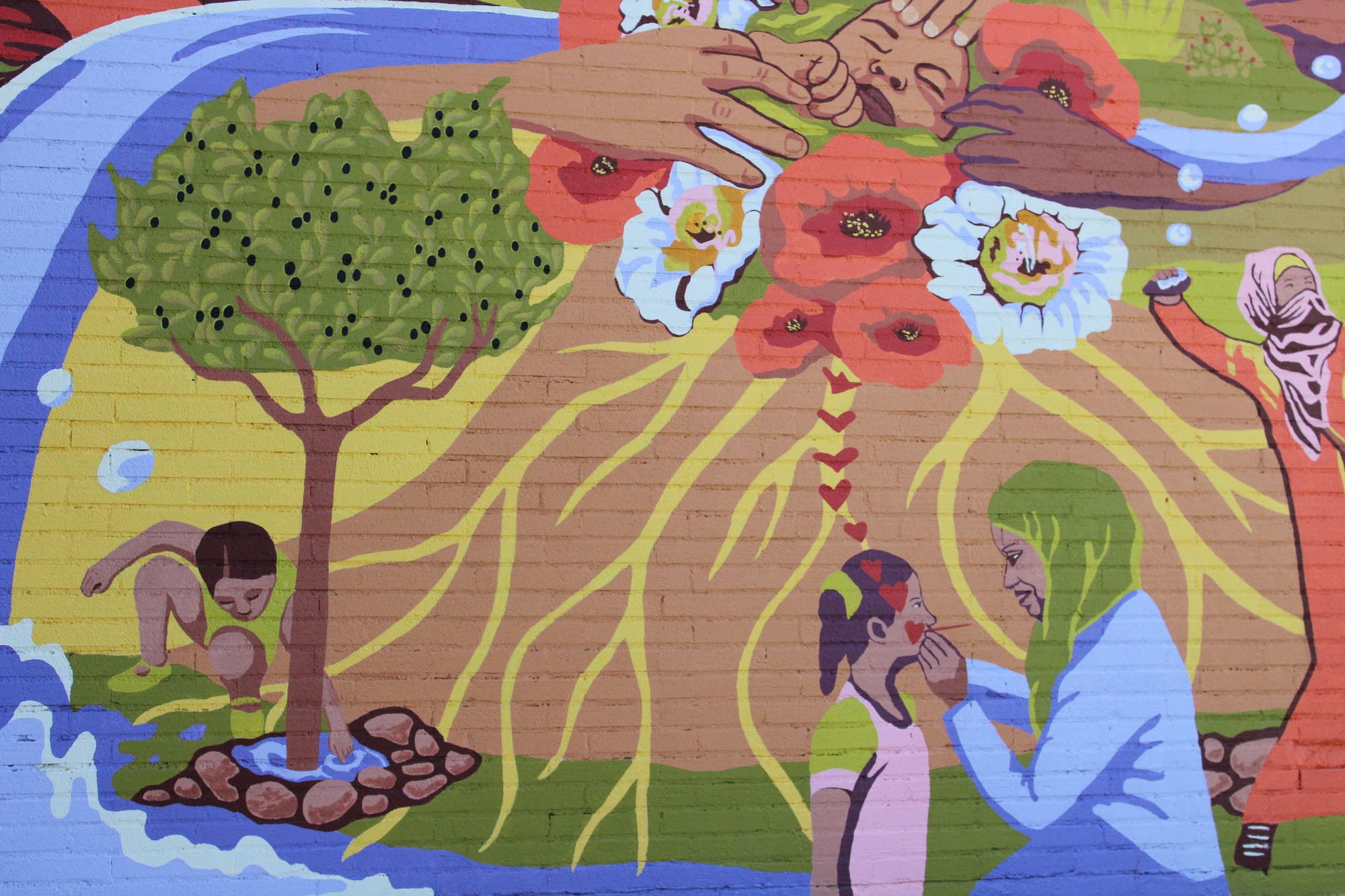
That’s exactly the point of the mural, Adler said.
"We are all collective in our fight for justice," she said. "We have to come together in solidarity and recognize the solidarity between movements, between lands, between peoples. That is a really important part in what this mural is trying to do."
David thanked BorderLinks for drawing attention to the beauty in both landscapes.
"It’s always important to remember our roots, our connections," she said.
After David’s remarks, BorderLinks Co-Director Ren Manning facilitated a community reflection, asking attendees to find a partner to discuss a series of questions.
Postcards of the mural were sold to raise money for Humans To Be, a grassroots initiative founded by Laila Ezzat Al Shana to create joyful spaces for children in Gaza.
Shana is a young woman and mother living in Gaza, trying to support her family and evacuate safely. BorderLinks also collected donations for her family.
"While we are trying to fundraise for her work, her doing that work is not possible if she and her family are not able to survive," said Donor Relations Coordinator Lauren Sutherland.
After the discussion, participants chatted and sampled pupusas while enjoying the new art.
"I hope that people are able to see the beauty that exists within the land, like the painting of the tree, the water, the mountains, the cactus, the sun and the birds," Adler said. "If nothing else, this is a tribute to the earth and our continuation in fighting for land and for the environment."
Gracie Kayko is a University of Arizona alum and freelance journalist.
Tucson Spotlight is a community-based newsroom that provides paid opportunities for students and rising journalists in Southern Arizona. Please support our work with a paid subscription.

